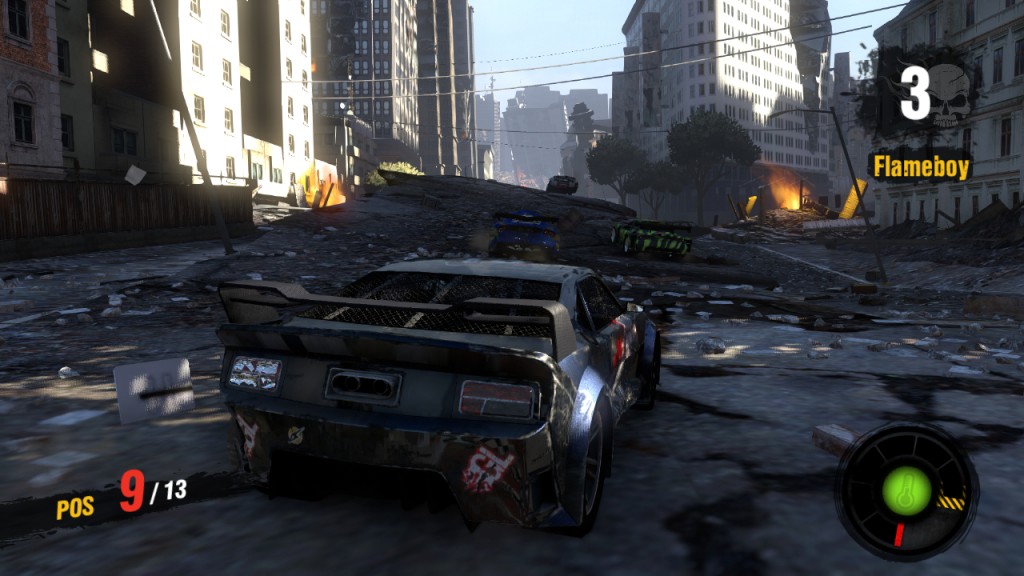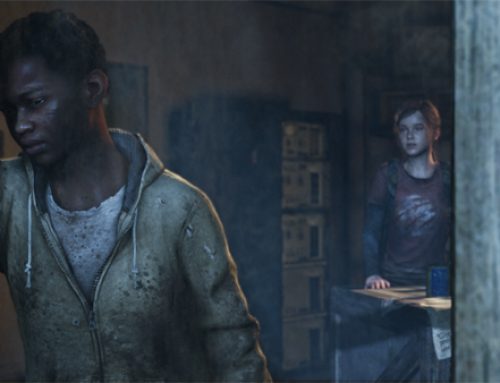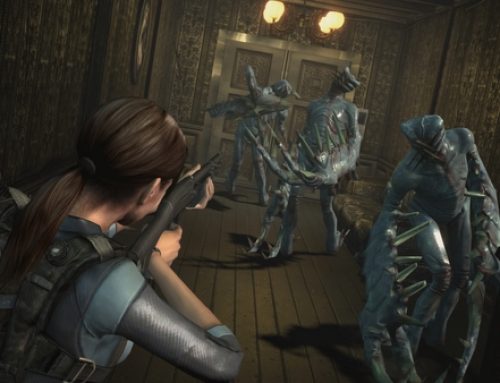
"Motorstorm Apocalypse" takes place in a fictional city that at times can remind you a lot of San Francisco.
Sometimes, the circumstances in which you play a video game can affect your enjoyment of it just as much as the quality of the game itself.
Although “Motostorm Apocalypse” boasts some sweet-looking graphics and adrenaline-fueld racing, I came to it ready to be put off. A game about a bunch of street racers stopping off to grind gears in a city ravaged by earthquakes and other natural disasters seems tone deaf given the recent monster earthquake in Japan. What kind of person watched aerial footage of Katrina-ravaged New Orleans and said, “Wouldn’t you love to play a racing game set in that, brah?”
But then a funny thing happened.
“Motorstorm Apocalypse” (rated T, $50 on PlayStation 3) happened to be the first game I played after finishing “L.A. Noire.” That game, a detective story set in 1940s Los Angeles, was terrific, but compared to most open-world games, its driving felt stifling. Cole Phelps was a cop, after all, and if you harmed civilians or damaged your squad car, your final score at the end of each mission would suffer.
After spending a dozen or more hours chafing at the vehicle-centered parts of “L.A. Noire,” “Motorstorm Apocalypse” felt liberating. Here was a game that encouraged me to drive across the rooftops of crumbling skyscrapers. I was encouraged to trade paint and knock other vehicles off the road. If I got too close to one of the few civilians not yet evacuated from the game’s vaguely named City, they’d grab onto my car and hold on for dear life.

All the explosions and debris in "Motorstorm Apocalypse" can sometimes make it tough to see where you're going, leading to a lot of crashes and frustration.
“Motorstorm Apocalypse’s” single-player game is about as straightforward as they come, featuring 40 tracks divvied up among three difficulty levels. Developer Evolution Studios has attempted to make its game more engaging than the average racer by having each difficulty level revolve around a different racer’s story. But I spent most of my time wondering how the bratty dilettantes were able to ignore all the suffering taking place around them before they scrambled back to the safety of their aircraft carrier.
The races tend to recycle the same dozen-plus tracks and 13 vehicle types, but Evolution changes things up each by adding new “events,” which are natural disasters or other calamities that alter the race course in some way. In one instance, an earthquake may cause the street to buckle in front of you, while in another, a toppling skyscraper could block off the bulk of the track, funneling racers through a choke point.
As modern as “Apocalypse’s” great-looking graphics, optional 3D visuals and destructible environments can feel, the core campaign structure can feel like a frustrating relic. On “rookie” difficulty, you’ll need to finish in the top five to unlock the next race, while “pro” requires a top-three finish. The final tier, “veteran,” requires you to finish first. Eventually, all but the most skilled players will hit a wall, where they’re forced to race the same track over and over, memorizing each potential hazard before they’re allowed to play anything new.
And it’s here where “Apocalypse” runs into another flaw, an occasionally iffy camera. Evolution has given its players several camera angles to choose from, but each is deficient in some way. The typical overhead, behind-the-car viewpoint is useful because it lets players see closing vehicles that might run them off the road. On the other hand, “Apocalypse’s” constant destruction means your view is occasionally incomplete or completely blocked by smoke and debris. As a result, you can end up smacking into an inordinate number of obstacles your first couple of times through a new track.
The first-person, inside-the-car viewpoint fixes that problem. Drivers can always see what’s directly in front of them, making it easier to avoid hazards. On the flipside, this view doesn’t include any rear or side mirrors. You’ll occasionally find yourself shunted off the road or rammed into a building by a rival you didn’t know was there.
When this does happen, the game has a nasty knack of respawning your car in suboptimal situations. I’ve routinely found myself put back on the track right before a big jump, unable to build up speed to clear a yawning chasm, or dropped in front of a half-dozen cars who all bump me and knock my car off course as the pass.
These flaws can be maddening over time, which meant I found the ideal “Apocalypse” play session tops off after an hour or so. Yet I still find myself coming back for a couple more “Motorstorm” races each night. Maybe it’s because I’m still a rookie, but I’ve found the online races, with their robust vehicle customization, perks and wagering system to be sufficiently deep and a lot of fun. It beats plodding around Los Angeles in a police cruiser.
Follow Eric Wittmershaus on Twitter and join the GameWit blog group on Facebook.



